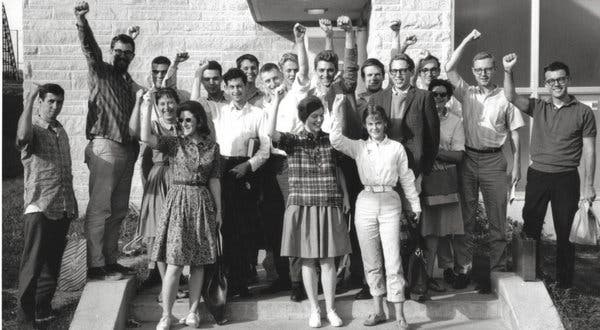Imagine a time when young people felt a fire burning inside them, a yearning for a better world. This wasn’T Just Wishful Thinking; it was a movement, fueled by disillusionment with the status quo and a deep desire for Social Justice. A group of students gathered in Port Huron, Michigan, in 1962, their minds buzzing with ideas and a shared vision.
They knew things had to change. The Cold War cast a long shadow, Mccarthyism stifled dissent, and economic inequality was rampant. This wasn’T Just About Politics; it was about the very fabric of society. Out of this meeting came the Port Huron Statement, a document that would become synonymous with the burgeoning student activism movement. It was more than just words on paper—it was a call to arms, a blueprint for creating a more equitable and democratic future.
The statement resonated deeply with students across America, many of whom joined organizations like The Students For A Democratic Society (SDS). This group became a powerful force for change, challenging the establishment and advocating for causes ranging from civil rights to anti-War Protests.
Students For A Democratic Society
The Port Huron Statement, with its call for participatory democracy and social justice, ignited a spark in the hearts of many students who felt disillusioned by the existing political system. This led to the formation of the Students for a Democratic Society (SDS), an organization that quickly became a powerhouse of student activism during the 1960s.
Imagine hordes of young people flooding College Campuses, their voices echoing with demands for change. SDS chapters sprang up across the nation, Organizing Protests, engaging in civil disobedience, and pushing for radical reforms. They weren’T Just Complaining; they were taking action, challenging everything from economic inequality to Racial Discrimination, and advocating for a more peaceful World Free From Nuclear Threats.
 Famous Patients at St. Elizabeths Hospital: A History of Notable Cases
Famous Patients at St. Elizabeths Hospital: A History of Notable CasesSds became a symbol of youthful idealism and a powerful force in shaping the political landscape of the era. Their actions resonated with millions, inspiring countless others to join the fight for social justice and a More Equitable Future.
Core Tenets Of The Port Huron Statement
The Port Huron Statement, more than just a rallying cry, outlined a clear vision for a Better World. It articulated the core beliefs that would guide the Sds and inspire countless activists in the years to come. At its heart was a deep Commitment To Participatory Democracy, where power resided not with elected officials but with the people themselves.
Think of it as a direct challenge to the status quo, a call for a more inclusive and representative system. The statement also addressed pressing social issues of the time, from economic inequality and racial discrimination to the dangers of militarism and Nuclear Proliferation. It argued for a society based on equality, justice, and individual freedom.
These weren’T Just Abstract Ideals; they were concrete proposals for action, outlining how students could work together to bring about meaningful change in their communities and beyond.
Social Change & Activism In The 1960s
The 1960s became a decade of unprecedented social change, fueled in large part by the activism ignited by The Port Huron Statement. From college campuses to city streets, young people mobilized around a range of issues, Demanding Equality, justice, and an end to war.
Think of iconic protests like those against The Vietnam War, The Civil Rights Movement marches for Equal Voting Rights, and the growing feminist movement fighting for gender equality. The Sds played a key role in many of these movements, Organizing Demonstrations, providing support to activists on the ground, and raising awareness about crucial social issues. It was a time when young people dared to dream of a different world and weren’t afraid to fight for it.
This wave of activism had a profound impact on American society, forcing the nation to confront its deep-seated problems and ultimately leading to significant reforms in areas like civil rights, education, and environmental protection.
Legacy And Influence Of The Sds
Though the Sds itself splintered in the late 1960s, its legacy continues to reverberate today. The movement’s emphasis on participatory democracy, Direct Action, and grassroots organizing inspired countless other activist groups that emerged in its wake. Think of organizations like Greenpeace, which fight for environmental protection, or Human Rights Watch, which tirelessly advocates for human rights around the world.
The Sds also left a lasting mark on American culture, Influencing Music, literature, and art. Its ideals of social justice and equality continue to resonate with young People Today, who find inspiration in the movement’s history and its unwavering commitment to change.
Even though their initial goals weren’T Always Fully Realized, the legacy of the Sds reminds us that ordinary people, when they come together with a Shared Vision, can have a profound impact on society. It’s a testament to the power of activism and the enduring human desire for a more just and Equitable World.
Towards Participatory Democracy
The Sds’s call for participatory democracy wasn’t just a lofty ideal; it was a blueprint for a more inclusive and responsive system of governance. The movement envisioned a society where decisions were made not solely by elected officials but by the people directly affected by those decisions.
Think of it as empowering individuals, giving them a real say in shaping their communities and their future. This vision extended beyond just politics; it encompassed all aspects of life, from education to healthcare to economic policy. The Sds believed that true democracy required active participation at every level, not just casting a ballot every Few Years.
This idea continues to resonate today, as people around the world grapple with issues of inequality and lack of representation. The movement’s legacy reminds us that building a truly democratic society requires ongoing engagement, Critical Thinking, and a willingness to challenge the Status Quo.










